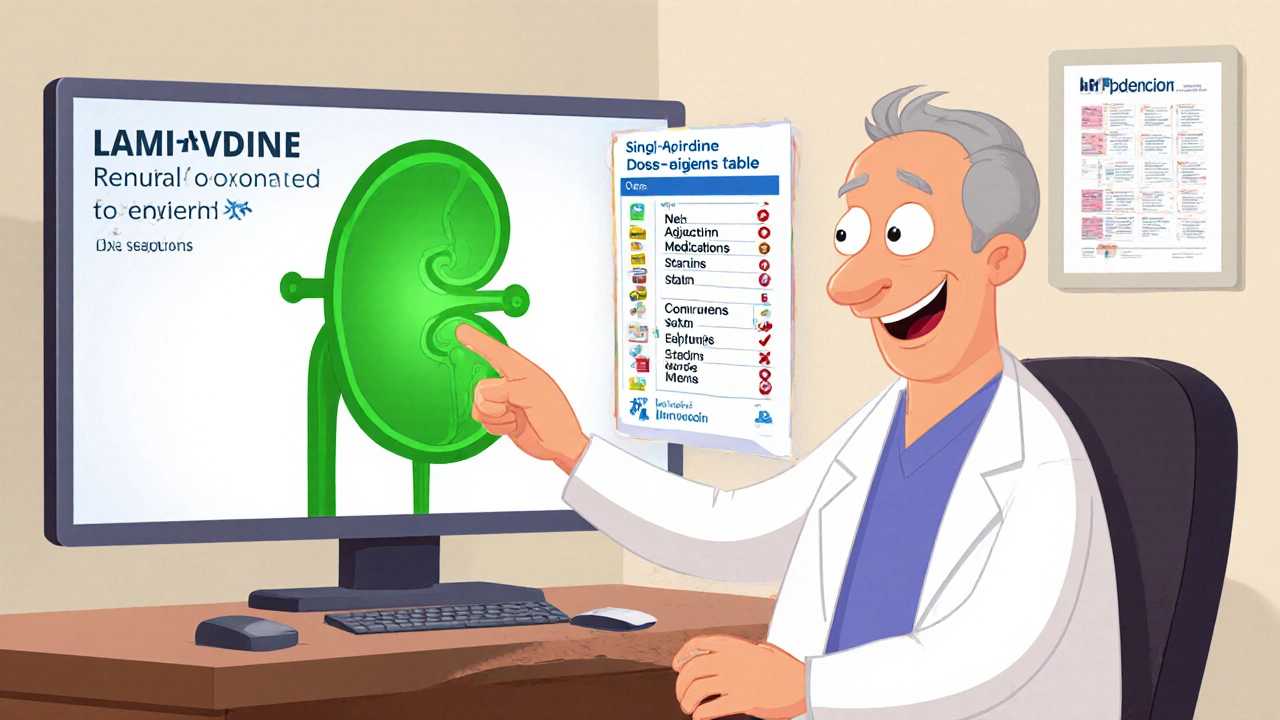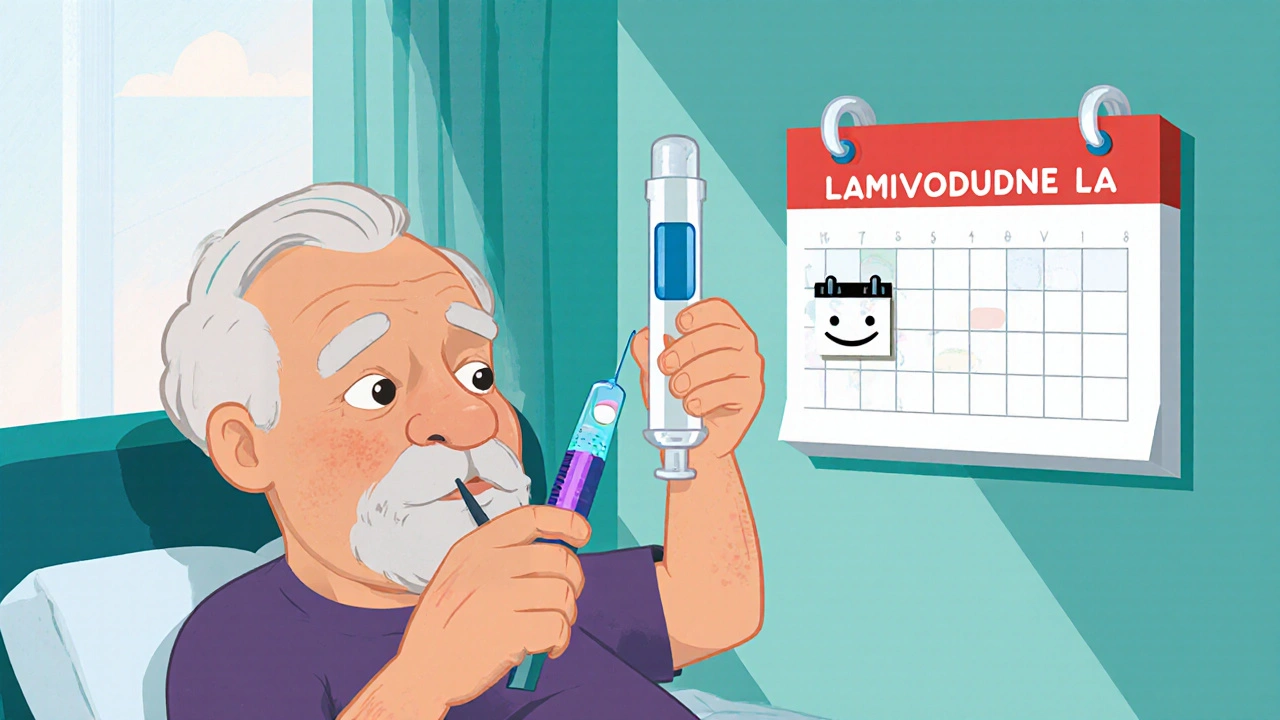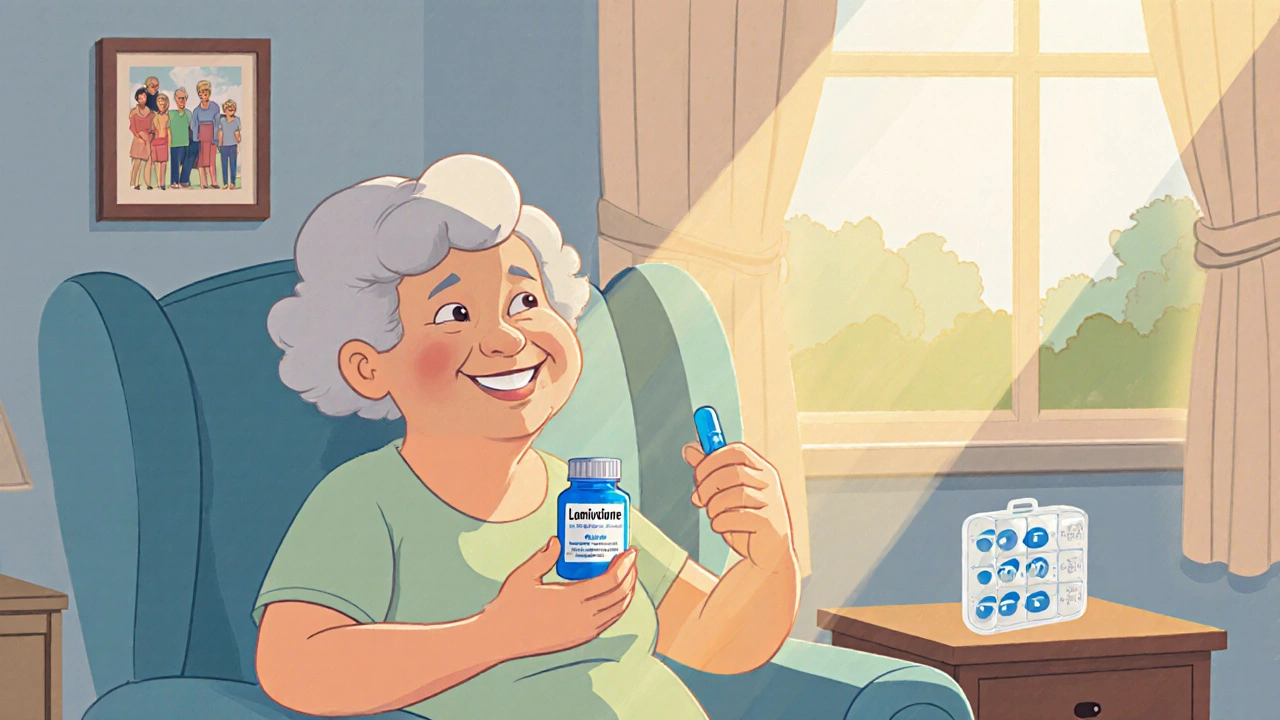Lamivudine Dosing Calculator for Older Adults
This tool helps clinicians determine appropriate lamivudine dosing for older adults (50+ years) based on renal function.
Dosing Recommendation
Living with HIV today looks very different than it did a few decades ago-thanks to modern antiretroviral therapy (ART), people are not only surviving but thriving well into their senior years. Yet, as the HIV‑positive population ages, clinicians must rethink how each drug fits into an older adult’s health picture. Lamivudine is one of the most widely used backbone agents, but does it hold up when patients face age‑related kidney decline, heart disease, and a growing list of medications? This article breaks down the science, the real‑world benefits, and the safety caveats you need to know to keep older patients on a regimen that works for them.
What is lamivudine?
Lamivudine is a nucleoside reverse transcriptase inhibitor (NRTI) that blocks the HIV enzyme reverse transcriptase, preventing the virus from copying its genetic material. Approved by the FDA in 1995, it is available as a 150mg tablet and is a core component of many fixed‑dose combinations such as Truvada and Epzicom. Its long safety record, low pill burden, and relatively mild side‑effect profile have made it a staple in first‑line regimens worldwide.
How lamivudine works within ART
As an NRTI, lamivudine mimics the natural building block cytidine. When HIV’s reverse transcriptase incorporates lamivudine into the growing viral DNA chain, the chain terminates, halting replication. This mechanism is highly effective across HIV‑1 subtypes and retains activity even when other NRTIs develop resistance. The drug’s half‑life of about 5‑7hours supports once‑daily dosing when paired with a boosting agent.
Why lamivudine matters for the aging HIV population
Older adults (≥50years) now represent over a third of the global HIV burden. They often carry a higher burden of co‑morbidities, poly‑pharmacy, and age‑related organ changes that can alter drug handling. Lamivudine offers several advantages that align with these challenges:
- High genetic barrier to resistance: Even after years of use, resistance mutations (M184V/I) typically reduce viral fitness, meaning the virus becomes less potent.
- Renal‑friendly dosing: Unlike tenofovir disoproxil fumarate (TDF), lamivudine does not cause significant proximal tubulopathy, making it safer for patients with mild‑to‑moderate chronic kidney disease (CKD).
- Low metabolic impact: It does not significantly affect lipid profiles or glucose metabolism, important for seniors managing cardiovascular risk.
- Minimal drug‑drug interactions: Lamivudine is not a substrate of CYP450 enzymes, reducing the chance of clashes with common geriatric meds such as statins, anticoagulants, or antihypertensives.

Pharmacokinetics and dosing considerations in older adults
Age‑related decline in renal function is the most critical factor for lamivudine dosing. The drug is eliminated primarily unchanged by the kidneys (≈70% via glomerular filtration). The standard 150mg daily dose is appropriate for patients with a creatinine clearance (CrCl) ≥50mL/min. For CrCl 30‑49mL/min, the dose should be reduced to 150mg every 24hours (i.e., same dose but monitor closely). When CrCl falls below 30mL/min, lamivudine is generally avoided in favor of alternatives with a more forgiving renal profile.
Other pharmacokinetic nuances for seniors include:
- Body composition changes: Increased fat mass can slightly expand the volume of distribution, but this has minimal clinical impact due to lamivudine’s low protein binding (<25%).
- Hepatic function: While the liver plays a minor role in clearance, severe hepatic impairment (Child‑Pugh C) warrants caution and close viral load monitoring.
Key clinical considerations
When prescribing lamivudine to older patients, look beyond the drug itself and assess the whole health picture.
- Renal impairment is the leading dose‑adjustment trigger. Use the Cockcroft‑Gault equation adjusted for age and body weight, and recheck renal labs every 3‑6months.
- Cardiovascular disease is common in this cohort. Because lamivudine does not raise LDL or triglycerides, it is a safer backbone when patients are already on statins or antihypertensives.
- Polypharmacy raises the risk of adherence lapses. Lamivudine’s once‑daily schedule and lack of CYP450 metabolism help keep pill burden low.
- Bone health can be compromised by tenofovir-related phosphate wasting. Lamivudine does not affect calcium or phosphate, making it a better option for patients with osteopenia or osteoporosis.
Regular monitoring should include:
- HIV RNA (viral load) every 3months until suppressed, then every 6‑12months.
- CD4 count at baseline and annually.
- Serum creatinine and eGFR at baseline, then at least yearly; more frequent if CrCl <60mL/min.
- Lipid panel annually, especially if the patient is on other ART agents with metabolic impact.
Lamivudine versus other NRTIs in seniors: A quick comparison
| Drug | Renal safety | Cardiovascular impact | Bone health | Typical dose |
|---|---|---|---|---|
| Lamivudine | Safe down to CrCl30mL/min (dose‑adjust if <50) | Neutral | Neutral | 150mg qd |
| Tenofovir disoproxil fumarate (TDF) | Nephrotoxic; avoid if CrCl <60mL/min | Potential lipid rise | Associated with phosphate loss & osteoporosis | 300mg qd |
| Emtricitabine (FTC) | Renally cleared; dose‑adjust <50mL/min | Neutral | Neutral | 200mg qd |
| Abacavir | Hepatically cleared; safe in CKD | Possible increased MI risk in patients with prior CVD | Neutral | 600mg qd |
For most seniors, lamivudine’s renal safety and metabolic neutrality give it an edge, especially when paired with integrase inhibitors that have a high barrier to resistance.

Practical tips for clinicians and patients
- Start with a thorough medication review; flag agents that share excretion pathways (e.g., metformin, digoxin).
- Consider fixed‑dose combos that include lamivudine (e.g., lamivudine+dolutegravir) to reduce pill count.
- Educate patients on the importance of regular kidney labs-symptoms of early CKD are often silent.
- If dose reduction is needed, do not split tablets; prescribe a lower‑strength formulation or adjust the dosing interval to retain adherence.
- Use the latest WHO guidelines (2023 update) which recommend lamivudine‑based regimens as a preferred backbone for adults over 50 when renal function permits.
Future outlook
Research is ongoing to develop long‑acting formulations of NRTIs, including lamivudine, that could be given monthly or quarterly. Such options would dramatically simplify management for older adults with limited dexterity or vision issues. Until then, the oral tablet remains a reliable, low‑risk choice when clinicians tailor dosing to each individual’s renal function and co‑morbid profile.
Frequently Asked Questions
Can lamivudine cause kidney damage?
Lamivudine itself is not nephrotoxic. The main concern is accumulation when the kidneys are severely impaired. Dose‑adjustment is required if creatinine clearance drops below 50mL/min, and the drug should be avoided when clearance is under 30mL/min.
Is lamivudine safe to use with statins?
Yes. Lamivudine does not interact with the cytochrome P450 system, which processes most statins. Monitoring for muscle symptoms is still advised, but the combination is considered safe.
What resistance mutations affect lamivudine?
The primary mutation is M184V/I, which reduces lamivudine’s efficacy but simultaneously weakens viral replication capacity. Clinicians often keep lamivudine in the regimen for its “mutant‑suppressing” effect while adding a second agent with a high barrier to resistance.
How often should viral load be checked in older patients on lamivudine?
After initiating or changing therapy, check at 4‑6weeks, then at 3months. Once suppressed, a 6‑12month interval is adequate unless there are adherence concerns or new comorbidities.
Can lamivudine be combined with tenofovir alafenamide (TAF) in seniors?
Yes, the combination is common (e.g., in Descovy). TAF has a better renal and bone safety profile than TDF, making the pair suitable for many older adults, provided overall renal function is monitored.
